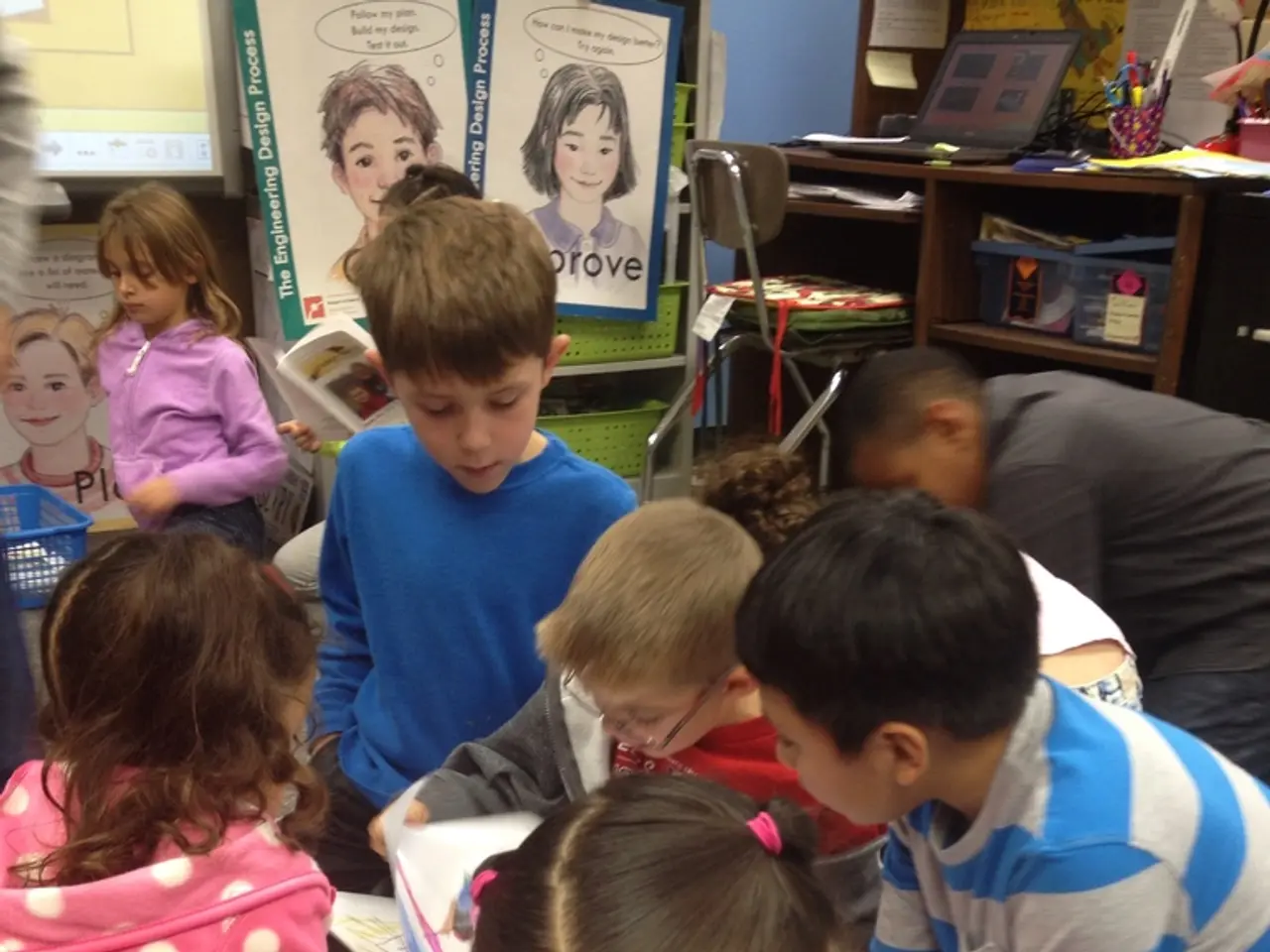Guides for Modeling Concepts for Children's Understanding
In the realm of science education, models play a crucial role in helping students understand complex concepts in a tangible and interactive way. These representations of real-world scientific principles are used by scientists and educators alike to test ideas, make predictions, and correct misconceptions.
Conceptual Models: Making the Abstract Concrete
Conceptual models, such as diagrams, food webs, and mental models, are a powerful tool for illustrating relationships in science. For instance, an ocean layers model, which involves pouring different colored liquids into a jar to represent ocean zones, offers a visual and engaging way to understand the structure of our world's oceans. Similarly, an edible DNA model, constructed from licorice and marshmallows, helps students grasp the structure of DNA and the principles of genetics.
Physical Models: Making the Three Dimensional Real
Physical models, like 3D replicas, offer a hands-on approach to learning. A solar system model, for example, allows students to visualize the relative sizes and distances between planets. On a smaller scale, a tectonic plate model, made from graham crackers and frosting, demonstrates how the Earth's plates move.
Mathematical Models: Quantifying the Unseen
Mathematical models, which use equations, variables, and graphs, help explain motion and physics concepts. A speed and motion graph, for instance, can be used to graph how far a toy car rolls on different surfaces, incorporating variables like friction and incline.
Computer Simulations: Predicting the Future
Computer simulations, like those predicting weather changes or planetary orbits, are invaluable in helping students understand the real-world applications of theoretical ideas. For example, students can collect data on daily temperatures and graph the trends over time using computer simulations and diagrams.
Promoting Creativity and Accessibility
Learning models are often embedded in guided inquiry—students ask questions, make predictions, perform experiments, and analyze results—which deepens conceptual understanding and critical thinking skills. Furthermore, using everyday materials to create models promotes creativity and accessibility in STEM education.
Examples for Elementary and Middle School Kids
For elementary school students (K-5), models such as a solar system model, a solar eclipse model, a water cycle in a bag, a lung model, a layers of the Earth model, a soil layers model, an ocean layers model, a simple electric circuit model, life cycle models, food webs & pyramid models, an earthquake shake table, and a heart pumping blood model, provide a hands-on approach to learning science.
Middle school students can create more complex models, such as scientific models of molecules like water (H2O) and carbon dioxide (CO2) using gumdrops, toothpicks, or pompoms and toothpicks.
In conclusion, scientific models are an essential tool in making abstract scientific concepts concrete and interactive, promoting active learning, and deepening students' understanding of science. Whether it's creating an edible DNA model or an earthquake shake table, these models offer a unique and engaging way to learn about the world around us.
Conceptual models, such as edible DNA models, help kids in elementary science education grasp complex principles like genetics by making them tangible and engaging.An ocean layers model, constructed using different colored liquids, is a powerful tool that helps kids visualize and understand the structure of the world's oceans.Physics concepts can be explained using mathematical models, like speed and motion graphs, which incorporate variables like friction and incline to demonstrate motion graphically.* Computer simulations, especially those predicting weather changes, planetary orbits, or daily temperature trends, help students understand the real-world applications of theoretical ideas.In the realm of engineering and science education, models are often embedded in guided inquiry, allowing students to ask questions, perform experiments, and analyze results to deepen their conceptual understanding.Using everyday materials, such as graham crackers and frosting, to create a tectonic plate model offers a hands-on, creative, and accessible approach to learning about Earth's geology.For middle school children, building scientific models of molecules, like water and carbon dioxide, using gumdrops, toothpicks, or pompoms, can help them explore and understand more complex scientific principles.Art plays a role in science education, too, as models like solar eclipse models can be beautifully illustrated, making learning engaging and memorable.Through hands-on projects and activities, such as creating an edible DNA model or an earthquake shake table, students can learn about the world around them in a way that is both fun and educational.*The realm of science education is vast, filled with various models that cater to different learning styles, making it easier for kids to grasp abstract concepts and inspire a lifelong love for learning and self-development.




